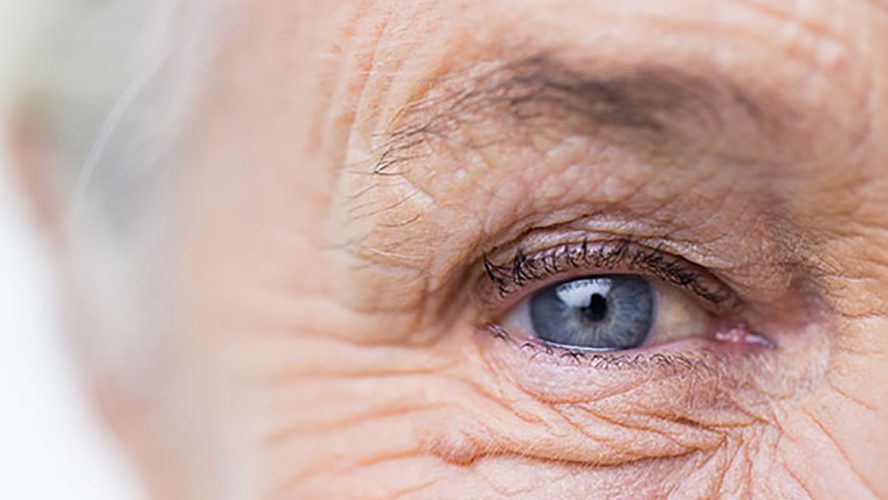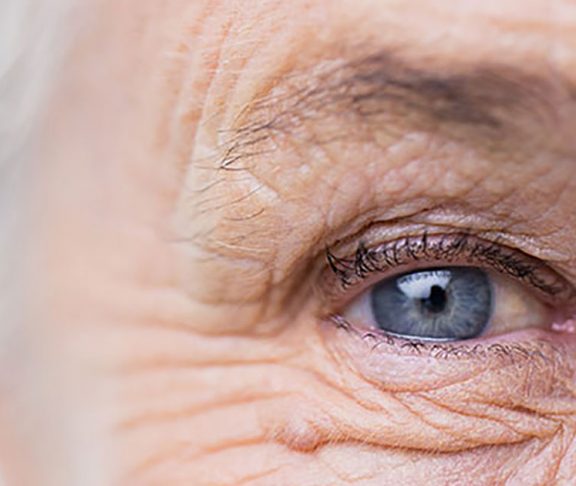I was diagnosed with age-related macular degeneration (AMD) when I was 39 – which is earlier than most. After 60, your risk for AMD goes up. One out of every three Americans over 75 is affected by it, making AMD the leading cause of vision loss in Americans over 60.
An uncertain future
I was told that, eventually, I would lose central vision, the ability to read, drive, watch TV, see peoples’ faces…and that there wasn’t much I could do about it. But I’ve found that early detection, early intervention, asking questions of your eye doctor, seeking support, and developing the willingness to make eye-healthy lifestyle choices will put you in the best position to preserve useful vision.
Immediate action to take
Don’t wait for symptoms to appear. There is a genetic component to AMD so, if you are directly related to someone who has AMD, ask your eye care specialist to test you for early signs. In fact, the earliest symptom of AMD is so subtle that you might ignore it. If you are having trouble seeing at night, especially while driving, you may be experiencing a decline in your dark adaptation – the ability to adjust from light to dark surroundings. There’s a quick, noninvasive, painless test that you should ask your eye specialist about. The single most important lifestyle change you can make to preserve your sight is to have regular vision tests with an eye care specialist.
For the most part, eye healthy practices are identical to heart healthy practices. The most influential, modifiable risk factor for developing AMD is smoking. Stopping at any age can reduce risk. Nutrition plays a significant role in slowing AMD’s progression, or accelerating it. Learn about the benefits of: adopting what’s known as a Mediterranean diet; eating low glycemic index foods; emphasizing dark, leafy greens and colorful fruits and vegetables; choosing foods high in omega-3 fats such as salmon, tuna and walnuts; avoiding baked and fried foods that are high in omega-6 fats. Exercise for at least 30 minutes, three times a week, enough to break a sweat. Keep your weight and blood pressure within recommended ranges. Protect your eyes from damaging blue light emitted by digital devices and the sun by wearing glasses that block out blue light as well as 100% of the UVA/UVB spectrum. Outdoors, wear wide-brimmed hats.
If you’ve been diagnosed with AMD, track your vision using some simple, self-testing charts (available from AMDF or your eye specialist) and immediately report changes to your eye doctor. If you have intermediate AMD, take a nutritional supplement known as the AREDS 2 formula (with lutein and zeaxanthin), which has been shown to slow the development of late AMD in about 25% of patients. If your treatment plan includes injections into the eye to treat late-stage AMD, understand that they do not restore sight but keep you from losing more vision – and that skipping them can allow sudden, irreversible vision loss to occur. Be aware that AMD vision loss can lead to isolation, cognitive decline, depression and even a sense of lost identity…and that there are services, counselors, Low Vision Specialists and vision aids, all of which can help.
At the American Macular Degeneration Foundation (AMDF), we listen to your concerns and direct you to the latest information on AMD risk factors and changes you can make to minimize them. We drive cutting edge research that will lead to new treatments and ways to live with AMD. Our goal is to improve the quality of life for everyone affected by AMD: patients, family, friends, caregivers and providers.
Chip Goehring, President, AMDF, [email protected]

